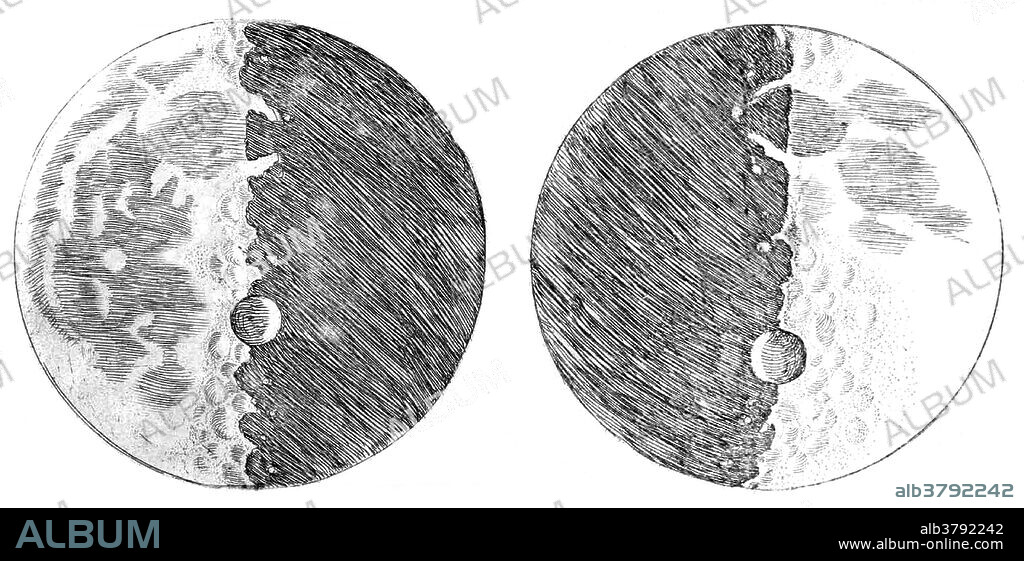alb3792242
Galileo Galilei, Moon Maps, 1610

|
Añadir a otro lightbox |
|
Añadir a otro lightbox |



¿Ya tienes cuenta? Iniciar sesión
¿No tienes cuenta? Regístrate
Compra esta imagen

Título:
Galileo Galilei, Moon Maps, 1610
Descripción:
Ver traducción automática
Moon drawings from Siderius Nuncivs by Galileo Galilei, 1610. By Galileo's time the Moon was believed to be perfectly smooth and incorruptible, like the Sun. In November 1609 Galileo pointed his telescope to the Moon for the first time. From November 30 until December 18, he examined and drew the moon. The first description of Lunar craters were described in his book Sidereus Nuncius. He differentiated great and ancient spots (macula magna antiqua) from small spots (macula minor). Galileo Galilei (1564-1642) was an Italian physicist, mathematician, astronomer, and philosopher who played a major role in the Scientific Revolution. His achievements include improvements to the telescope, important astronomical observations and support for Copernicanism. Galileo has been called the "father of modern observational astronomy", the "father of modern physics", the "father of science", and "the father of modern science".
Crédito:
Album / Science Source
Autorizaciones:
Modelo: No - Propiedad: No
¿Preguntas relacionadas con los derechos?
¿Preguntas relacionadas con los derechos?
Tamaño imagen:
4800 x 2381 px | 32.7 MB
Tamaño impresión:
40.6 x 20.2 cm | 16.0 x 7.9 in (300 dpi)
Palabras clave:
1610 • ARTE • ASTRONOMIA • ASTRONÓMICO • BLANCO Y NEGRO • BOCETO • CIENCIA • CIENTIFICO GALILEO GALILI • CUERPO CELESTE • DIBUJO • FAMOSO • GALILEO GALILEI • GALILEO • GEOGRAFIA • GEOGRAFICA • GEOGRAFICO • HISTORIA • HISTORICO • ILUSTRACION • IMPORTANTE • LUNA • LUNAR • OBRA DE ARTE • PLANETOIDE • RENOMBRADO • REVOLUCION CIENTIFICA • SATELITE TERRESTRE • SIGLO XVII • TOPOGRAFIA • TRATADO
 Pinterest
Pinterest Twitter
Twitter Facebook
Facebook Copiar enlace
Copiar enlace Email
Email
